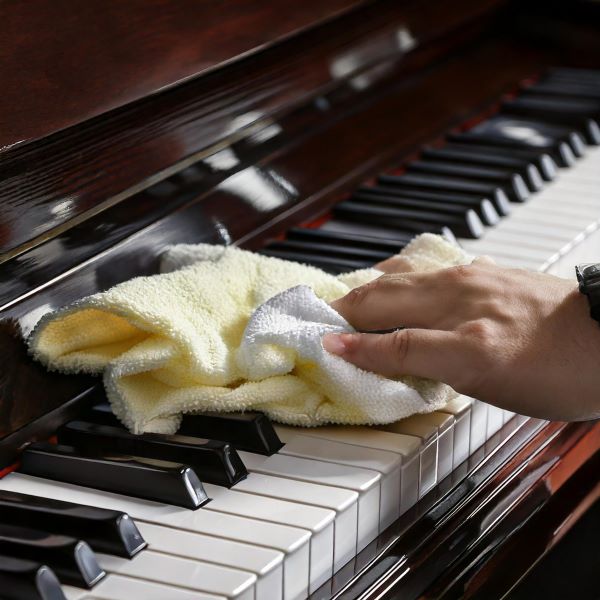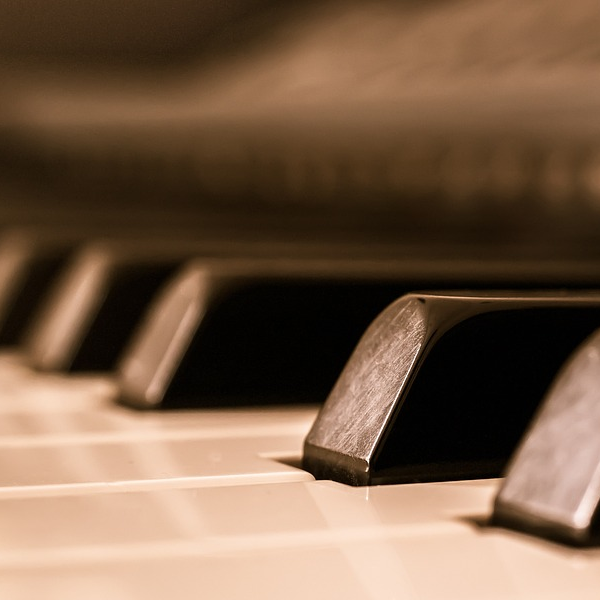Piano keys are the heart of the instrument, each one serving as a unique voice within a broad and expressive range. Together, the keys allow players to create melodies, harmonies, and rhythms across a spectrum of sound that is both versatile and dynamic. Understanding the layout and range of piano keys is one of the first and most essential steps in learning to play the piano, providing a foundation for everything from basic scales to complex compositions.
In this guide, we’ll delve into the details of piano keys—from the number of keys found on standard and specialty pianos to tips on cleaning and maintaining them. Whether you’re curious about the materials used or simply want to know how many keys are in a full-sized piano, this comprehensive guide will cover everything you need to know.
How Many Keys Are on a Piano?
How Many Keys Are There on a Full-Sized Piano?
Pianos come in various sizes, but full-sized pianos maintain a specific, consistent number of keys. For a typical full-sized piano:
- Standard Answer: A full-sized piano has 88 keys.This key count is composed of:
- 52 white keys—these produce the natural notes (A through G).
- 36 black keys—these create the sharps and flats, giving the piano its versatility in scales and chords.
Key Count on Different Piano Types
Various types of pianos come with different numbers of keys, depending on their purpose and design. Here’s a quick breakdown:
- How many keys on a standard piano?
- Standard acoustic pianos are built with 88 keys, providing the most complete tonal range.
- How many keys on a grand piano?
- Most grand pianos have 88 keys, though some high-end models may offer additional keys in the lower or higher registers for an extended tonal range.
- How many keys on a keyboard piano?
- Keyboard pianos, often designed for portability and practice, come with key counts that vary:
- 61 keys: Common for beginner keyboards, providing five octaves.
- 76 keys: A good balance for portability and range, with just over six octaves.
- 88 keys: Full-sized keyboards emulate traditional pianos, offering the complete range.
- Keyboard pianos, often designed for portability and practice, come with key counts that vary:
Knowing the variations can help when choosing an instrument, especially for specific performance or practice needs.

Black and White Keys – Understanding Their Layout and Function
What Are the Black and White Keys Called?
Piano keys are divided into black and white keys, each playing a unique role in creating a wide range of musical notes and scales.
- What are the black keys on a piano called?
- The black keys are known as sharps and flats, which represent semitones. These keys fill in the half-step gaps between certain natural notes, allowing players to perform chromatic scales and a greater variety of chords.
- What are the white keys on a piano called?
- The white keys are referred to as natural notes, which correspond to the seven basic tones in Western music: A, B, C, D, E, F, and G. This layout repeats across the keyboard and forms the basis for learning scales and melodies.
How Many Black and White Keys Are There?
Knowing the exact count of each key type helps demystify the piano layout:
- How many black keys on a piano?
- There are 36 black keys on a standard 88-key piano. These keys are arranged in patterns of two and three across each octave, creating a visual and functional guide for players to navigate scales and chords.
- How many white keys on a piano?
- A full-sized piano contains 52 white keys. These natural notes form the main foundation for melodies and scales, making it easy for beginners to recognize patterns and start playing.
Together, the black and white keys allow pianists to access a broad harmonic range, from rich, deep bass tones to bright, high pitches.
Materials and Care for Piano Keys
What Are Piano Keys Made Of?
The materials used for piano keys have evolved over time, offering insight into the craftsmanship and ethical choices surrounding modern pianos.
- Historical Materials: Traditionally, ivory was used for white keys due to its smooth texture and slight grip, while ebony was often used for black keys. Ivory’s natural texture made it a popular choice, though its use has raised significant ethical concerns.
- Modern Alternatives: Today, piano manufacturers predominantly use plastic and other synthetic materials that emulate the feel of ivory and ebony. These alternatives offer increased durability and affordability while adhering to ethical standards by preserving endangered wildlife.
How to Tell if Piano Keys Are Ivory?
For vintage pianos, identifying ivory keys can be intriguing, as they exhibit certain distinct characteristics:
- Texture and Patterning: Ivory has a slightly porous texture and can develop unique, fine lines known as “Schreger lines” over time, which are usually absent in plastic keys.
- Coloration: Unlike plastic, ivory keys tend to develop a yellowish tint with age, adding a warmer tone to the key’s color.
- Ethical Considerations: Due to conservation efforts, modern pianos have transitioned to synthetic materials, creating a more ethical alternative for players and preserving endangered species.
How to Clean Piano Keys Safely

Maintaining clean piano keys is essential for both aesthetics and playability. Different materials require slightly different cleaning approaches.
- How to Clean Ivory Piano Keys: For delicate ivory keys, use a soft cloth dampened with a mild soap solution or specialized ivory cleaner. Avoid abrasive products and excess moisture, as they can damage the porous ivory surface. Regular, gentle cleaning can help prevent yellowing.
- How to Clean Modern Piano Keys (Plastic): Plastic keys are generally easier to maintain. A soft, lint-free cloth lightly dampened with water or a non-abrasive cleaner can help keep them clean. For regular maintenance, gently wipe the keys down after each use to prevent dirt buildup and maintain their natural shine.
Proper care extends the life and beauty of piano keys, ensuring they remain in optimal condition for years of playing.
Labeling and Learning the Keys
How to Label Piano Keys for Beginners
Labeling piano keys can be an invaluable tool for beginners, offering visual support as they familiarize themselves with the keyboard layout.
- Using Temporary Stickers: For beginners, temporary stickers or removable labels on the keys can help identify each note quickly. Stickers labeled with note names (C, D, E, etc.) or solfege syllables (Do, Re, Mi) are popular choices and are widely available in music stores or online.
- Color-Coding for Visual Aid: Some beginners benefit from color-coded stickers that group similar keys (e.g., all C’s in one color) to enhance recognition. This can be especially helpful for young learners or visual learners.
- Guidelines for Removing Labels: While labeling can boost confidence and speed in early stages, it’s beneficial to gradually remove the labels as familiarity grows. Removing stickers one octave at a time can encourage beginners to memorize key positions and build muscle memory, setting the foundation for independent playing.
Labeling is a supportive, short-term tool that can make the learning process smoother, helping beginners develop an intuitive understanding of the keyboard layout.
Keys are Key
Understanding piano keys—from their layout and materials to proper maintenance—opens up a deeper appreciation for the instrument and the art of piano playing. Knowing the structure of black and white keys, the different materials used, and how to care for and label them empowers beginners and seasoned pianists alike to connect more fully with the piano.
By mastering these fundamentals, you’ll not only improve your playing skills but also develop a respect for the craftsmanship that goes into each key. Embrace this knowledge as you continue your journey, letting the elegance and functionality of the piano inspire each practice session and performance.
Now, that you’re familiar with they keys: can you find out which notes I am playing with the left hand here?

